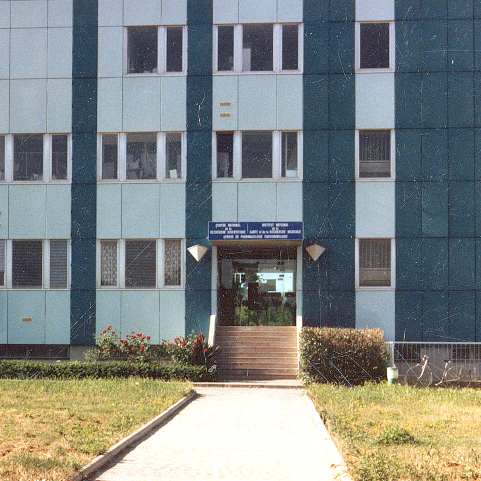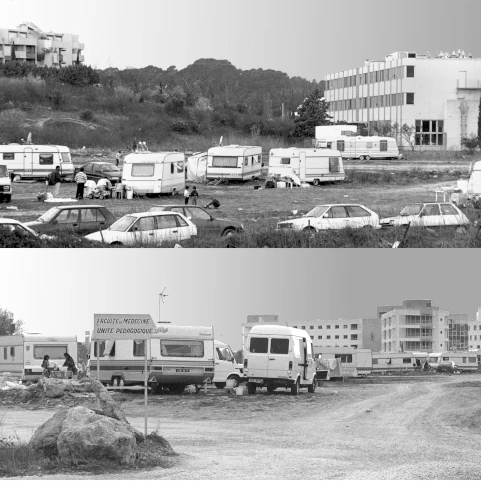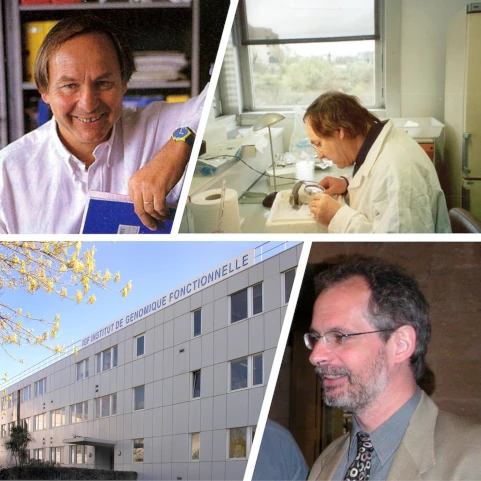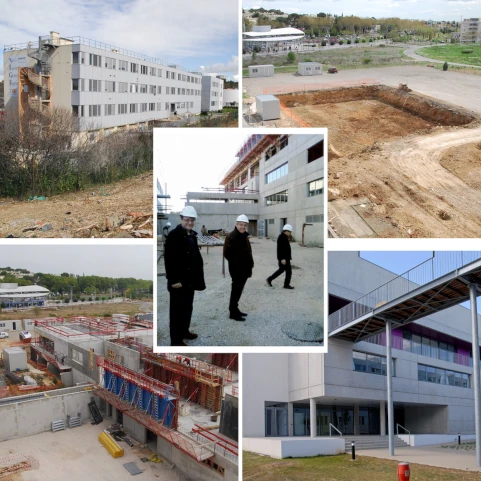History

/ From the CNRS-INSERM Pharmacology-Endocrinology Centre to the Institute of Functional Genomics
In 1942, Professor Marcel Janbon's infectious diseases department in Montpellier was treating many cases of typhoid caused by eating contaminated food. Sulphonamides were beginning to be used against most infectious diseases, and Rhône Poulenc sent compound 2254 RP to Professor Janbon. Of the first 30 patients treated, three died of hypoglycaemia. Professor Janbon asked Auguste Loubatières to analyse the effects of 2254 RP on blood sugar levels. A. A few years later, Loubatières showed that these sulphonamides stimulated insulin release through a series of very elegant experiments, and hypoglycaemic sulphonamides are still used today to treat millions of type II diabetics. The CNRS then built Professor Loubatières a laboratory to the north of the Hôpital Lapeyronie, in the middle of a garrigue, so that he could develop his research. Unfortunately, A. Loubatières died suddenly in 1977, before his institute had been completed. The CNRS then leased the building to the PTT (Postes, Télégraphes et Téléphones), which set up a documentation centre there.
The Court of Auditors took notice, and the directors of the CNRS (Pierre Papon) and Inserm (Philippe Laudat) contacted Serge Jard and Joël Bockaert, two biologists working at the Collège de France, and Bertrand Castro, a chemist working in Nancy, to ask them to set up a new laboratory in the building. Dominique Bataille and a small group of fifteen adventurers agreed to embark on this adventure. It was an uphill battle to obtain the dual CNRS and Inserm supervision, but these pioneers were convinced that basic research and medicine should not be separated. The CNRS-INSERM Centre for Pharmacology and Endocrinology (CCIPE) was born and officially inaugurated in 1982.

/ The CCIPE, a catalyst for the development of the Arnaud de Villeneuve campus
The creation of this centre was part of an unprecedented decentralising ambition, and its location in Montpellier was linked to the tremendous development of a small pharmaceutical laboratory, Clin-Midy, which became Sanofi in 1980. The CCIPE scientists were supported by Georges Frêche, Mayor of Montpellier, who announced at the inauguration that this scrubland was to become a superb campus and that a new Faculty of Medicine would be built there. This was achieved in 2017… Over the years, Serge Jard and Joël Bockaert organised the site's laboratories into a Federative Research Institute, IFR3. The CCIPE became the Institute of Functional Genomics (IGF) and Jacques Demaille created the Institute of Human Genetics (IGH) right next to the IGF on the Arnaud de Villeneuve Campus, which is now one of the most active in France and has a strong international reputation.


/ Towards the creation of the Institute of Functional Genomics
The ambition of the founders of the CCIPE and the IGF was to create a multidisciplinary centre bringing together physiologists (Serge Jard, Dominique Bataille), a pharmacologist (Joël Bockaert), peptide chemists (Bertrand Castro, Jean Martinez) and structural chemists (André Padilla, Adrien Cavé). Several major Montpellier laboratories were subsequently set up by these pioneers, including the Institut des Biomolécules Max Mousseron (IBMM) and the Centre de Biologie Structurale (CBS). The main scientific project was the study of cellular interactions (hormones, neurotransmitters, receptors, signalling) in endocrinology and neurobiology.
The first director of the CCIPE was Serge Jard, a specialist in the hormones oxytocin and vasopressin. Bertrand Castro took over as director, but soon left to join Sanofi. He was succeeded in 1990 by Joël Bockaert. In 1992, the CCIPE was split into several CNRS and INSERM units. But in 2005, Joël Bockaert brought these units back together into a single laboratory: the Institut de Génomique Fonctionnelle (IGF) in Montpellier. He will be its director until 2010. Jean-Philippe Pin then took over as director of the IGF until 2020, and Philippe Marin succeeded him on 1 January 2021.

/ A new building for the IGF and genomics platforms to serve everyone
At the end of the 1990s, Jacques Demaille, Joël Bockaert and many others anticipated that biology would rapidly change scale, with the transition to 'omics' biology (genomics, proteomics, pharmacogenomics, etc.) and the era of 'big data'. It was important for Montpellier and the surrounding region to be at the forefront of this race, equipping themselves with high-performance, sophisticated and expensive instruments such as high-throughput sequencers, DNA chip robots, mass spectrometers, etc.
Joël Bockaert and his teams worked for ten years on the construction of a new building (IGF-Sud) to complement the recently renovated IGF-Nord, bringing together these genomics instruments to serve all the laboratories in Montpellier and beyond. Today, the IGF is home to more than 300 researchers, students, engineers and technicians. It is developing a project focused on the functional genomics of physiological and pathological cellular communications in the fields of neurobiology, endocrinology, oncology and cardiology.



